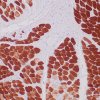Sorry to hear about your daughter OP
@FStevenChalmers hope she is improving.
re: "facts which make this wrong", agree putative mechanisms provide models which can be a worthwhile muse. Not qualified to comment on electronic analogies.
With this dandelion idea I find myself objecting to radical ideas about myoglobin which don't fit what I have read about myglobin structure or distribution. I am all for disrupting dogma but using scientific evidence. So below is the kind of evidence which could make me Mr Grinch, I am not dismissing the abstract principles behind the idea, just questioning this proposed mechanism and molecular candidate.
Myoglobin is allegedly kind of spherical and was the first molecule characterised using X-ray crystallography, no tail in any pictures I have seen. According to the wiki, the protein structure probably wraps around the porphryn and acts like a cage to prevent porphryn groups interacting and forming an inactive dimer. So they are a bit like air-flow practice golf balls.
https://en.wikipedia.org/wiki/Myoglobin#Synthetic_analogues
ref: Lippard SJ, Berg JM (1994).
Principles of Bioinorganic Chemistry. Mill Valley, CA: University Science Books.
Myoglobin seems to function a bit like a self assembling oxygen conduction and storage pipeline inside cells, expediting transfer down a gradient and maximising local concentrations and it does not seem to be exclusively located around the cell membrane. (following caps not mine sry)
"IMMUNO-HISTOCHEMICAL LOCALIZATION OF MYOGLOBIN IN HUMAN MUSCLE TISSUE AND EMBRYONAL AND ALVEOLAR RHABDOMYOSARCOMA"
https://onlinelibrary.wiley.com/doi/abs/10.1111/j.1699-0463.1982.tb00078_90A.x
"Light and electron microscopic studies on localization of myoglobin in skeletal muscle cells in neuromuscular diseases."
https://onlinelibrary.wiley.com/doi/abs/10.1002/mus.880140409
If its in the I-band its not simply at the membrane. You would need to have it change conformation at the membrane or a separate gateway molecule at the membrane to make this idea work. Not saying that is impossible, we are nothing if not ignorant as to our own nature but all I have read, everyone seems happy with the idea of O2 diffusion kinetics providing oxygen to the cell cytoplasm and no discussions of trans-membrane oxygen transporters as O2 is considered non polar, which is why imho myoglobin is probably not the right molecular candidate for an immune activated obstruction to aerobic respiration.
However its true something funny is going on with respiration in ME. Yes there are reports of excess lactic acid production in ME CFS.
"Elevated blood lactate in resting conditions correlate with post-exertional malaise severity in patients with Myalgic encephalomyelitis/Chronic fatigue syndrome"
https://www.ncbi.nlm.nih.gov/pmc/articles/PMC6906377/
"Abnormal blood lactate accumulation during repeated exercise testing in myalgic encephalomyelitis/chronic fatigue syndrome"
https://www.ncbi.nlm.nih.gov/pmc/articles/PMC6546966/
Interestingly Prof Ron Davis nano needle tests discovered that plasma from ME CFS blood could convert normal control cells to ME cells and vice versa, ME cells could normalise in normal plasma. I seem to recall another similar experiment by someone but cannot remember the ref.
So yes something funny is going on involving some kind of signal or obstructive molecules in ME plasma but I think myoglobin is probably not where I would start.
My preferred over-arching theory is dysfunction of an immune state change which is an evolved mechanism to change how energy is used systemically thoughout the body in response to immune challenge.
I dont think an O2 channelopathy hypothesis is likely when we dont have a channel, nor would it account for the observed extensive changes in immune cell morphology e.g. some more from Ron Davis' team.
"Phenotypic characteristics of peripheral immune cells of Myalgic encephalomyelitis/chronic fatigue syndrome via transmission electron microscopy: A pilot study" 2022 Aug 9 :
https://www.ncbi.nlm.nih.gov/pmc/articles/PMC9362953/
Thats it I am done pushing my boulder uphill for today!


